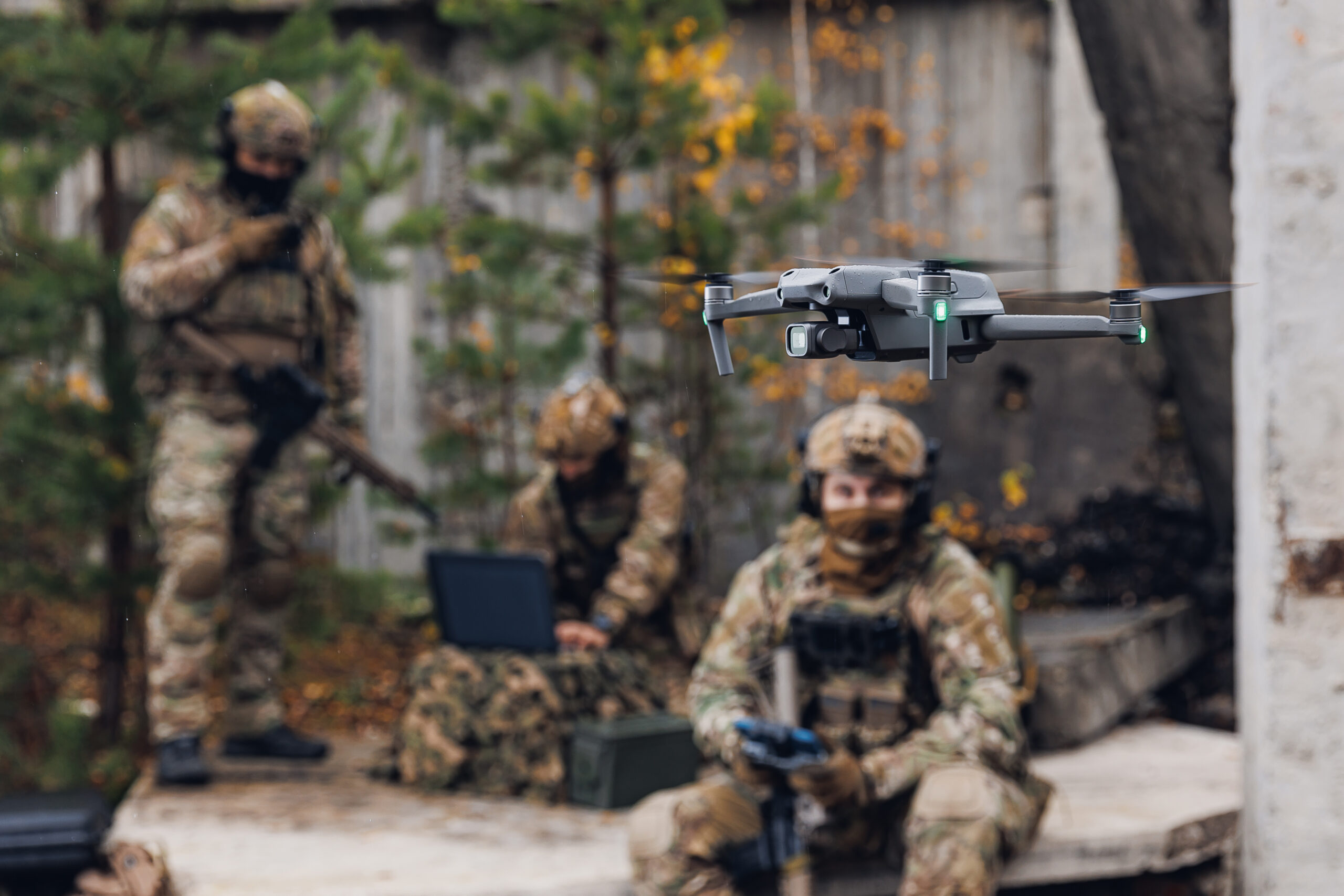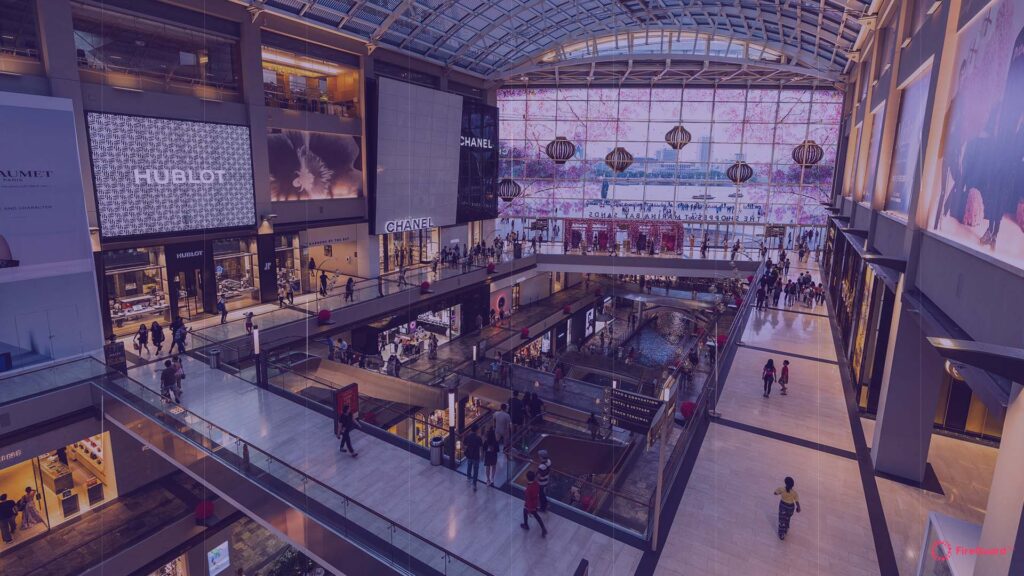
Canadian Startup Chaac Showcases Advanced AI Mine Detection
Chaac Technologies Demonstrates Breakthrough AI Mine Detection Capabilities at Gagetown Military Base Montréal, QC – [Date] – Chaac Technologies is proud to announce the successful

When you’re out shopping, the last thing on your mind is escaping a raging fire. But unfortunately, fires happen more often than we’d like to think. In 2020 alone, there were over 16,500 store and office fires in the US, causing nearly $1 billion in damages. Retail fire safety training prepares employees for these worst-case scenarios.
While Canada’s numbers are likely lower, retail spaces remain vulnerable. All those flashy electronics, wiring, and flammable cotton products make prime tinder. And there’s always the risk of arson.
As employees, we must protect not only inventory but customers, too. Panicked shoppers unfamiliar with the store’s layout could become trapped. Others may have trouble evacuating due to mobility limitations or language barriers.
Proper training means faster response times and less panic. Yet traditional methods like occasional live drills or classroom lectures have serious shortcomings. This article explores why immersive training in virtual reality software like FireGuard VR is ideal for retail fire safety training.

First, we should discuss why fire preparedness lies at the heart of retail operational excellence. Nobody wants to think about worst-case scenarios when you’re just trying to ring up shoppers, restock shelves, or balance the books.
But here’s the thing. Disaster can strike anytime in a retail setting, which is why retail fire safety training is essential. And when it does, split-second staff reactions make all the difference in containing damages. Proper training is truly life or death.
Yet despite regulatory requirements and common sense, many retailers skimp on thorough training. Without the proper knowledge and skills, employees may freeze up when it matters most.
Here is why retail spaces need vigilant fire safety protocols.

Retail commerce ranks among the highest-risk locations for fires. Densely-packed aisles full of electronics and fabrics are an explosive cocktail. That in-season cotton shirt display or the latest gaming console demo is all it takes to ignite a fire that quickly spreads out of control.
And let’s not forget about the abundance of flammable chemicals in cleaning supplies and cosmetics. Or even the presence of open flames at candle displays, cooking demos, or seasonal holiday decorations.
It’s not just about what’s on the shelves. Retail spaces also house many electrical systems and equipment that can malfunction or overheat. With employees, consumers, and inventory constantly moving in and out of the store, there are simply more opportunities for accidents to occur.
Retail fire safety training teaches employees that our duty goes beyond protecting inventory and property. Without proper planning, we could also fail customers counting on us in an emergency.
Think about it. Shoppers unfamiliar with the store layout may struggle to locate alternate exits, especially when vision is obscured. Senior citizens or those with disabilities can easily get left behind in the commotion as well. And what about tourists and non-English speakers who are unable to interpret announcements?
The reality is some patrons will need assistance getting out safely. Guiding scared customers requires training and experience to avoid getting overwhelmed.

Beyond moral reasons to have solid emergency protocols, there are legal and financial ones, too. Labor laws across Canada explicitly mandate proper employee training for fire safety compliance.
Companies can take massive hits to insurance coverage after violations and injuries. We’re talking lawsuits, damages payouts in the millions, steep rebuilding costs, and expensive inventory losses, too.
Small fires that go unchecked also devastate brand reputations and customer loyalty long-term. Comprehensive planning is non-negotiable from a dollars and cents standpoint.
What begins as a small contained fire can often be quickly suppressed before major damages occur. However, without proper response training, seemingly minor mishaps can rapidly spiral into facility-wide emergencies with devastating financial consequences.
The sudden loss of revenue streams can be crushing for retailers forced to close after major fires. With location access severed during months-long reconstruction, the customer purchases flatline, draining cash reserves to cover ongoing expenses.
Full-scale rebuilding projects require massive capital infusions as well. Overhaul fees stack up quickly from structure and inventory restocking to smoke removal services, contractors, and materials. Despite insurance payouts, some expenses may still strain budgets.
The impact of revenue loss may still linger even after reconstruction finishes. Customers often view major fire damage as indicative of wider operational problems, seeding doubts about brand reliability and product quality controls. Once shaken, loyalty and trust prove difficult to regain.

Of course, it’s better to have any fire safety preparations versus none. Still, most conventional training approaches fail to deliver quick response skills that hold up in real crises.
Live fire drills refer to occasional training where employees gather to extinguish a small controlled blaze using real fire extinguishers. However, these live simulations pose notable downsides.
For one, untrained staffers interacting with real flames – even contained ones – risk safety accidents. Panicked trainees may get dangerously close or mishandle equipment. Unpredictable winds could also spread fires unexpectedly, causing burns.
In addition, the infrequent nature of these drills means skills erode quickly after each session. Hosting live demonstrations yearly or less fails to cement muscle memory.
The scripted scenarios presented also differ drastically from unpredictable real retail fires. As any firefighter knows, no amount of planning can fully replicate volatile open flames. So, the real-world applicability is questionable.
Finally, repeatedly deployed fire suppressants pose environmental impacts and high restocking costs.
Classroom-based fire safety lectures and textbook training no doubt raise general hazard awareness. However, passive learning experiences often fail to inspire genuine behavior change or comprehension.
Studies show classroom trainees only retain 20% of covered material after just one week. Without opportunities to demonstrate understanding, key facts slip through the cracks. This pales compared to VR training, which still drives 80% retention after a full year.
There is also the challenge of weak real-world applicability, even if concepts stick on paper. Simply imagining how one might respond in an emergency differs drastically from effectively demonstrating skills when tragedy strikes. It’s not unlike people who watch superhero films but freeze encountering real danger. No amount of armchair analysis builds muscle memory.
For lightning-quick response times, employees need engaging and frequent practice. On top of that, it should be tailored to their actual store’s layout. Sound impossible? Not with virtual reality fire drills.
The above breakdown has shown why more advanced retail fire safety training is non-negotiable. VR solutions like FireGuard deliver unparalleled realism, convenience, and memory retention. With FireGuard VR, employees have the tools they need when disaster strikes.

FireGuard VR was created by the innovative team at Chaac Technologies, led by Guillaume Nepveu. A groundbreaking virtual reality fire safety program designed for retail environments.
FireGuard VR immerses learners in realistic retail fire scenarios. Users praise it for its engaging, hands-on training without any real danger. After donning a virtual reality headset, trainees are transported into a detailed 3D retail space.
When fire breaks out, they’ll spring into action, putting their knowledge to the test as they work to contain the emergency. The unmatched realism of VR creates an impactful learning experience. One that sticks with trainees long after the headset comes off.
Let’s walk through an example VR safety training scenario. You’re working in a clothing store at the mall when a fire suddenly erupts in the stockroom’s back corner. Flames lick up the piles of boxes and fabrics. Thick smoke floods the area, reducing visibility. Overwhelmed with adrenaline, you set off loud, shrill alarms to call 911. You then run to find a fire extinguisher while guiding others to the nearest exit.
You must act fast before the fire spreads further or someone gets hurt. That is but one of many emergency scenarios included in FireGuard VR’s extensive training library.
To ensure maximum realism, FireGuard VR was designed hand-in-hand with firefighters. A raging fire’s sights, sounds, and stress have been recreated to match real-world conditions. Crackling flames, blaring alarms, choking smoke—it’s all very lifelike.
The scenarios are also paced to mimic real emergency timelines. The simulation gives trainees a true sense of urgency as situations intensify. Between the precise sensory details and quickening pace, FireGuard VR delivers an authentic high-pressure training experience. It kicks fight-or-flight instincts into high gear.
FireGuard VR is as close to a real crisis as possible without any actual danger.
While comprehensive, FireGuard VR begins with an easy-to-understand tutorial. The goal is to ease trainees into the simulation. Once oriented, there are eight training scenarios across three difficulty settings for a total of 24 challenge levels. The wide range covers core skills like:
The overarching training goals are to learn skills for safeguarding oneself and coworkers. The program also touches on understanding the organizational responsibilities of protecting staff.

FireGuard VR reproduces trainees’ actual work environment with near-perfect accuracy. From product displays down to niche details, it will remind you of your own store. Our artists use photos and layout schematics to construct stunning virtual clones of retail spaces. Backrooms, kitchens, entrances, and exits are all precisely matched to realistic locations.
Whether it’s wholesale boutiques, supermarket franchises, discount outlets, or a warehouse, we can build it. When fire breaks out in the simulation, the familiar setting adds an extra layer of realism that makes the training even more impactful. Responses become instinctual when situations and surroundings closely mimic reality.
Where you are in the building and what you’re doing when an emergency strikes radically changes how you should respond. That’s why FireGuard VR provides specialized training tailored to each employee’s role.
A manager in the back office will face unique challenges compared to a cashier at the front or a salesperson on the floor. The VR experience adapts to these perspectives. It provides role-appropriate trials like prioritizing administrative duties versus customer evacuation.
Just as in real retail spaces, every position requires specialized knowledge to respond correctly during crises. FireGuard VR trains those intricacies through true-to-life practice.
FireGuard VR metrics provide granular insight into trainee performance. Upcoming updates will add more data points, such as fire progression, extinguisher usage efficiency, and smoke inhalation levels. Pinpointing strengths and exposing weaknesses is a good way to evaluate the efficacy of training programs. With comprehensive analytics, administrators can refine training to achieve mastery.
Along with enhanced analytics, the team at Chaac Technologies is also developing new hazard modules that leverage the capabilities of virtual reality. Two upcoming offerings dig deeper into critical knowledge areas:
The Perils of Smoke – Smoke inhalation poses severe risks during fires. This module provides firsthand experience of how rapidly smoke spreads in confined spaces while an alarm blares and flames consume oxygen. By witnessing the quickening pace of danger, trainees learn to fear smoke and respond with greater urgency.
Door Safety Protocols – Doors can unexpectedly turn into conduits for spreading fires. This program covers vital door-handling skills like heat detection, containment techniques, and smoke control to prevent additional oxygen from feeding the flames.

Transitioning to software marks a monumental leap in engagement for retail fire safety VR training. But many wonder if the investment is worthwhile. Let’s explore the tangible benefits to prove ROI.
VR delivers all the adrenaline of real-world disaster scenarios without any actual danger. This allows for repeated practice to build muscle memory and confidence. No more need for special equipment or risky live flames.
With VR, employees can rehearse emergency protocols in a simulated representation of their actual store. The hyper-realistic visuals and sounds make it feel like you’re right there in the middle of the crisis, getting that adrenaline rush. But when you take the headset off, you’re back in the breakroom completely unharmed.
It makes it possible to drill scenarios that would be far too dangerous or impractical to recreate in the real world. Things like damage, multiple points of origin, or heavy smoke fill up the store. The more curveballs employees have to contend with in VR, the more prepared and level-headed they’ll be for the real thing.
Available in English and French (with Spanish coming soon), the software works as a self-contained unit with a headset. At only 4 minutes per level and 90 minutes total, it takes less employee time than traditional drills.
Studies also confirm accelerated skill development — people train up to 4X faster in VR. Plus, new hires can get up to speed almost instantly instead of waiting months for the next live drill.
Sporadic live drills require renting equipment, closing off sections of the store, and pulling employees off the floor. VR training can happen anytime without disrupting operations. Employees can even use their headsets to run through the simulation on their breaks or from home.
And since the software adjusts the difficulty based on the user’s ability, it keeps veterans sharp while allowing total newbies to build confidence before tackling more complex scenarios.

Visual immersion and interactivity keep employees laser-focused during training, boosting retention dramatically. In fact, VR learners have been shown to be 3.75X more emotionally connected to content compared to other methods.
Friendly competition also motivates employees to keep sharpening their skills together.
Staring at a screen or listening to a lecturer explain protocols is a surefire way to zonk out. When employees virtually navigate flaming rubble and thick smoke in an accurate version of their own store, it’s almost impossible not to be fully engaged.
Just like playing a sport or musical instrument, practical application accelerates learning exponentially compared to theory alone.
Unlike sporadic live drills, VR provides granular tracking of individual and team progress. Management can use these insights to tailor coaching and prove ROI on the training investment to key stakeholders.
Detailed performance analytics allow managers to pinpoint knowledge gaps by department or location. For example, one employee may struggle with fire-type identification. Perhaps another often forgets to pull the alarm before evacuating. Targeted coaching ensures every employee builds competency across diverse emergency situations.
The rich data also demonstrates ROI on the VR training investment when presenting to senior leadership.

Don’t leave fire preparedness to chance. Equip your team with the latest immersive training for retail emergency response.
Contact Chaac Technologies to schedule a custom FireGuard VR demo and see how this solution can revolutionize your retail fire safety training.
The future of life-saving training is now – book your demo to get started!

Chaac Technologies Demonstrates Breakthrough AI Mine Detection Capabilities at Gagetown Military Base Montréal, QC – [Date] – Chaac Technologies is proud to announce the successful

The public sector is the backbone of our communities. From the local library to Canada Post, these organizations exist to help citizens. And help they